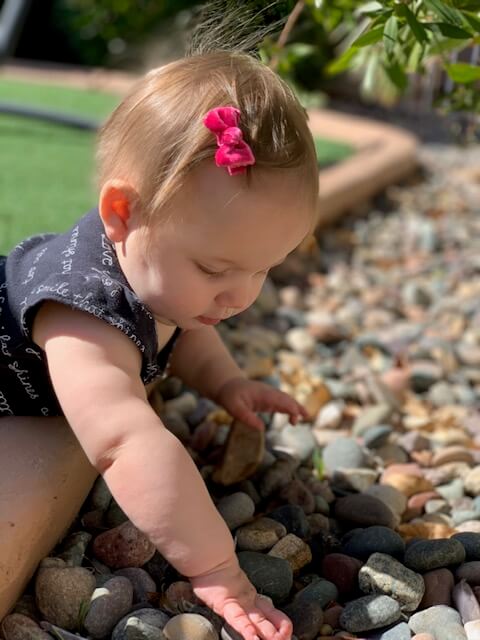
When the box, remote, or rock are better than any conventional toy
I don’t know how many times I have heard, “I bought my kid this fancy toy, but she just wants to play with the box.” Have you said this yourself?
My philosophy has always been to lean in. So, that might mean if they like boxes, give them boxes to play with.
There is a certain power in playing with unconventional toys. It promotes creativity and problem-solving skills, which are becoming more and more important in school and in life.
I was always the teacher that had glass and real materials even with very young children. This stems from the Reggio philosophy, but I have seen time and time again how giving glass items to children teaches them to take better care of toys and materials. And honestly, I have only seen a few things break and there wasn’t any grand catastrophe. We clean it up and move on. The child has now learned more from breaking a glass cup than they have with you telling them repeatedly to “be careful!”
Sometimes we have to realize what is an actual danger and what is a personal fear. Really evaluate why we react the way we do.
Having a child has made me much more self-reflective. Instead of controlling their every movement and moment of time, let us step back as parents and let them lead the way (within reason).
Here are some Household Objects that provide powerful learning experiences.
Note: All play should be supervised at all times.
1. Rocks and other natural items
Since we live in Las Vegas, Nevada many of the yards are desert landscaping, including our backyard. We have river rock all over the backyard and this is my 7 month old’s current favorite toy. Variations on rocks include other outdoor material (sticks, leaves, flowers, soil, pine cones, etc.). Some of the things Ruby is working on while playing with the rocks in the backyard are:
- Balancing on one hand while reaching with the other (helps with crawling)
- Fine motor skills
- Properties of real objects
- Language when we talk about what she sees and feels (“ooo you grabbed the smooth rock, that’s pretty” “Is it heavy?” “Look at the red rock”)
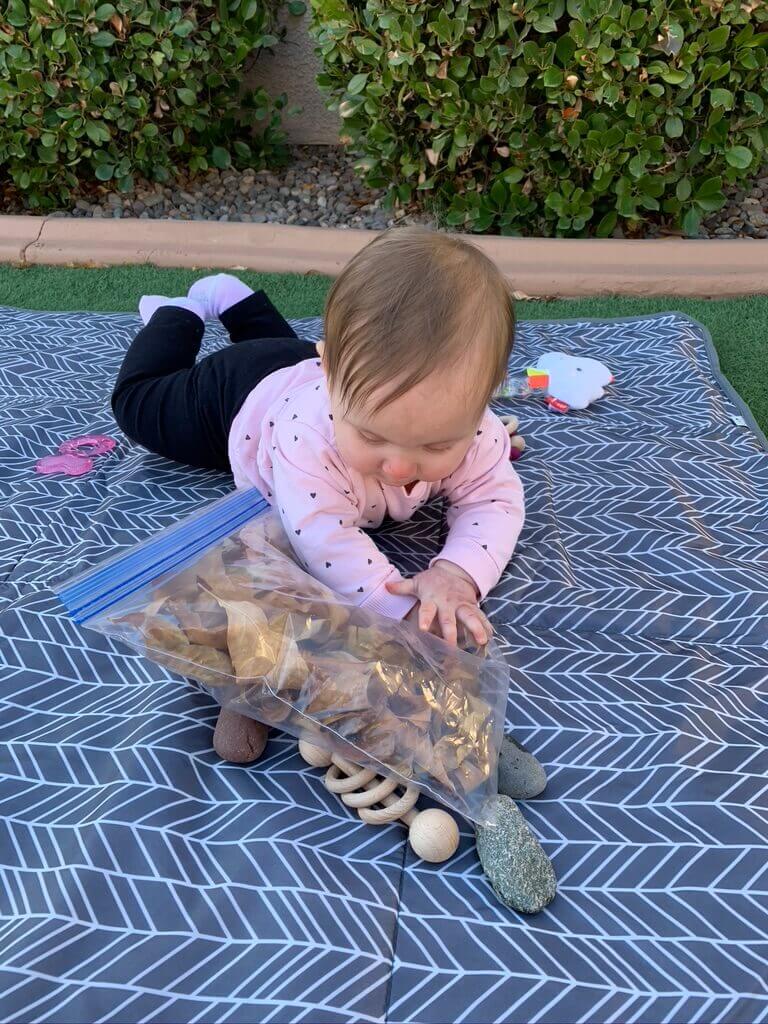
2. Strings, ribbons, and cords
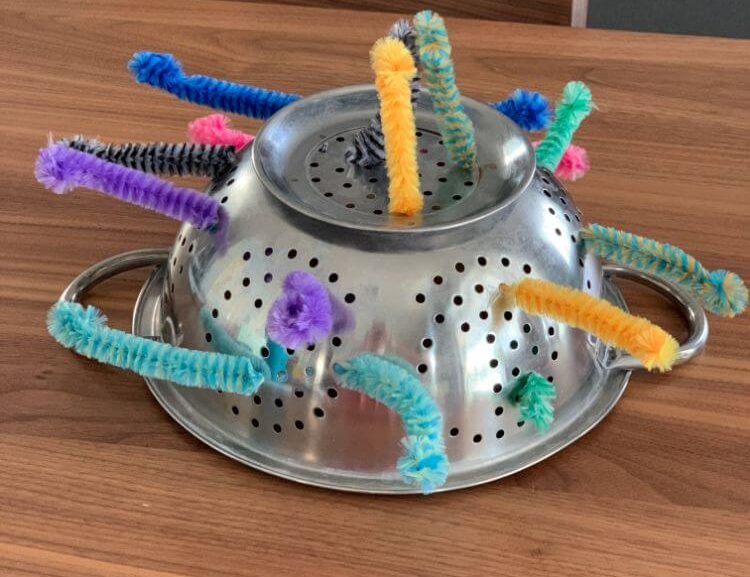
I don’t let my baby chew on cords that are plugged in, but I understand that she likes the feel or look of a cord so I find something similar to play with. I have tied ribbon and string to some of her toys or have made pull and tug toys with boxes and strings. I have even given her some shorter cords that we no longer use under supervision. The funny thing is even after I gave her the cords to release some of the intrigue and power that the cord has, she still continues to prefer the cords that are plugged into the wall. Ugh, why? Some learning benefits of strings/ribbon play include:
- Fine motor control and strength
- Hand-eye coordination
- Properties of real objects
- Vocabulary such as pull, long, skinny
3. Boxes
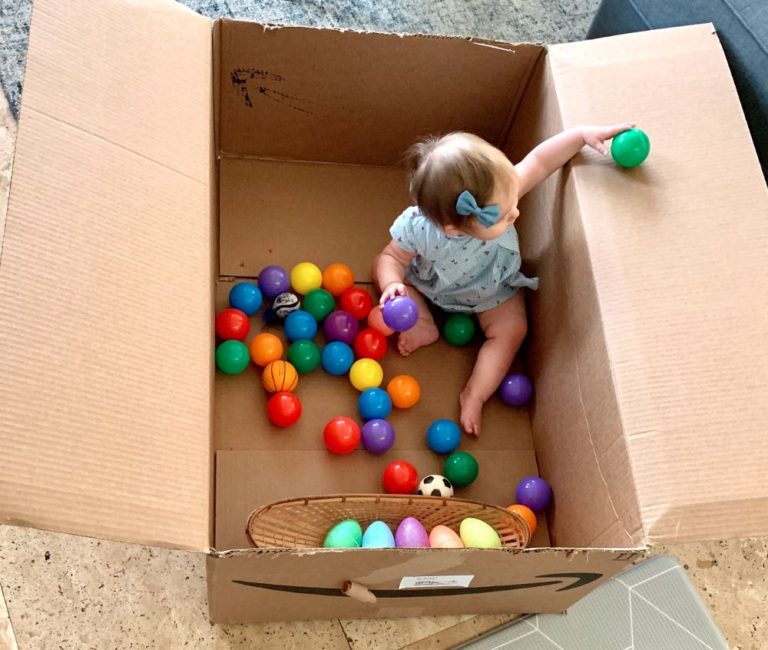
There are seemingly endless ways to use boxes in play. Have you ever read the book Not a Box by Antoinette Portis? If not, you definitely should! When children are a little older they can use their imaginations to make the box into what they want. For babies, there are DIY toys or activities you can create. For Ruby, I have made pull and tug with a box, object permanence box, box puzzle, or simply somewhere to crawl into. The possibilities for learning are about as varied as the ways you choose to play with the box.
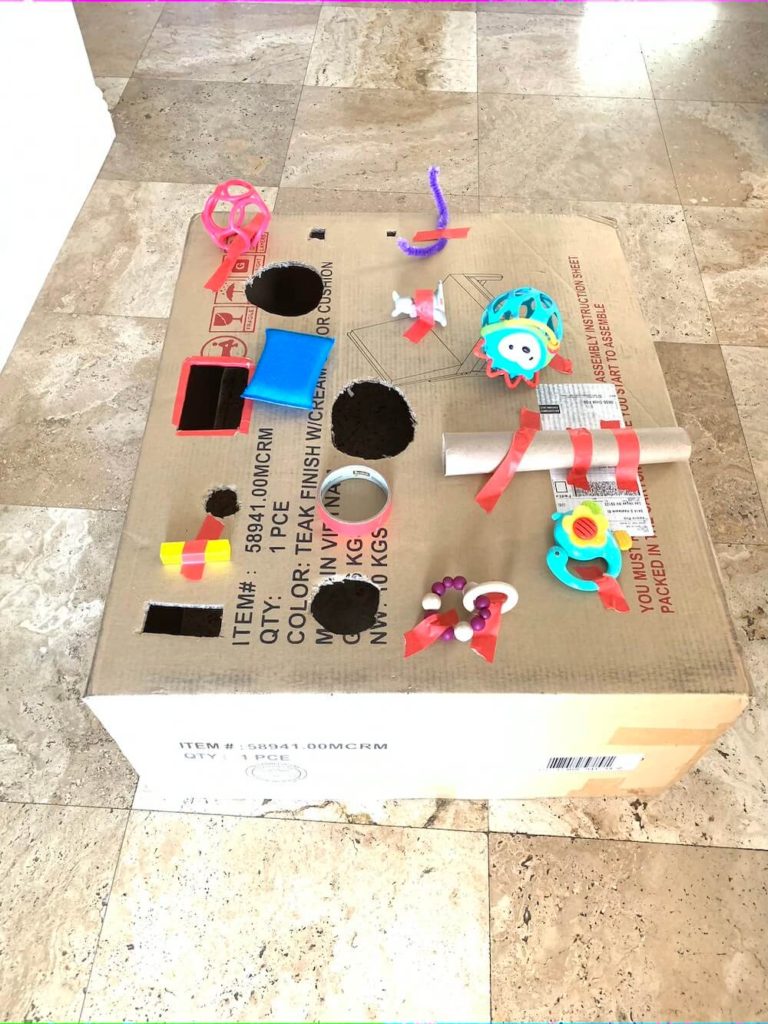
4. Remotes, keyboards, and other electronics
What kid doesn’t love a remote? Often toy companies try to emulate the success of the classic remote, but they do so with bright colors and cartoonish details. This isn’t real life and that’s what babies and young children crave. Babies are exploring the world around them and young children want to emulate everything the adults are doing. It makes them feel powerful. So, I say skip the play remote, keyboard, or phone and give them the real stuff (take the batteries out first). Some of the things they learn by playing with real electronics include:
- Properties of real objects
- Fine motor
- Creative thinking
- Problem-solving
- Vocabulary such as numbers, letters, push, button, remote, phone, call, point, on, off
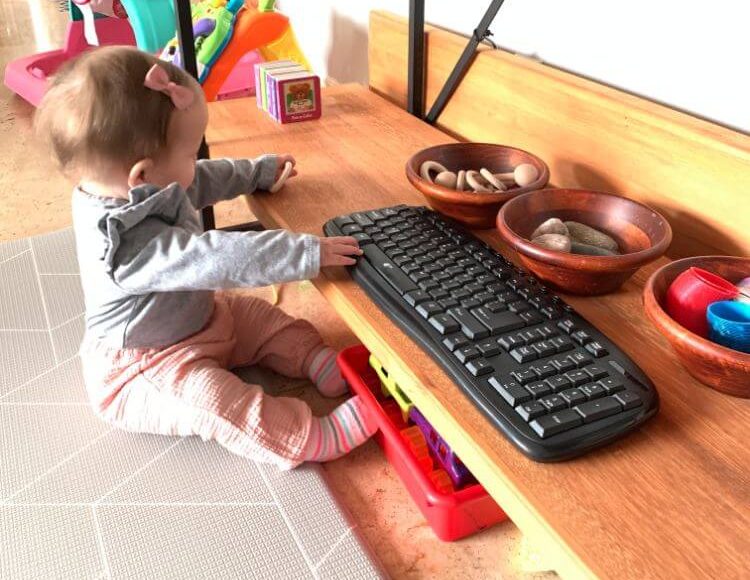
5. Kitchen items
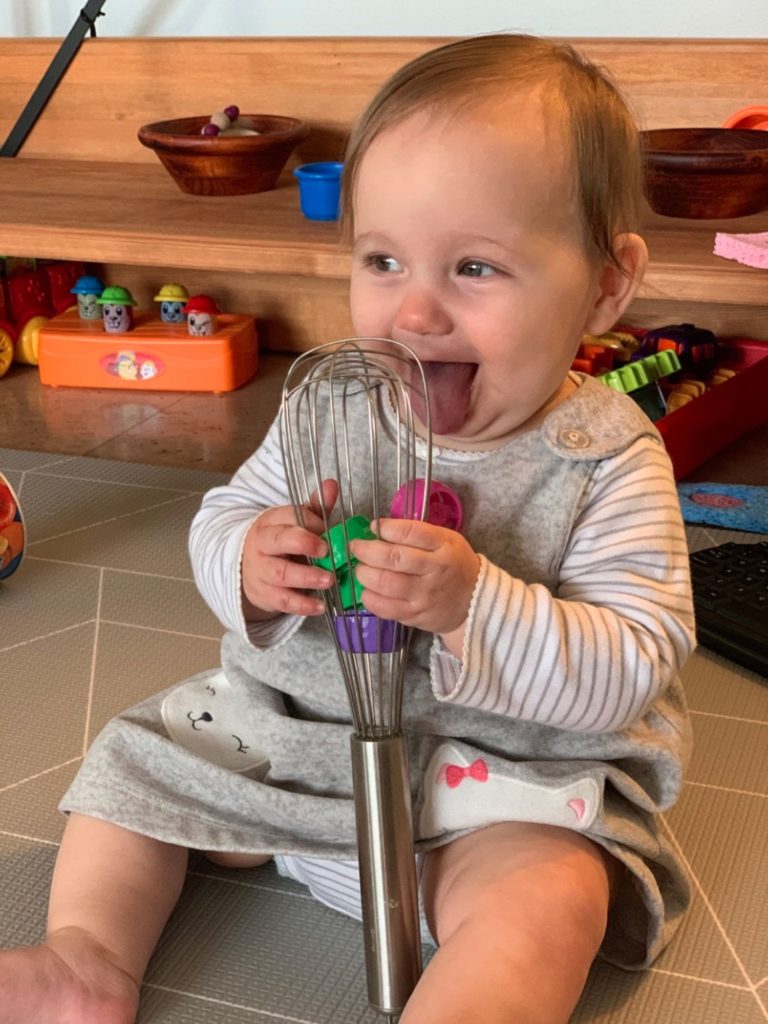
I first thought of using kitchen items with Ruby when I realized she was ready for stacking cups, but I didn’t have any. I pulled out the measuring cups instead. She played at her high chair with measuring cups, while I cooked in the kitchen. It was a wonderful thing. We have since used other kitchen items including wooden spoons, silicone spoons, bowls, ice cube trays, sponges, baking sheets, and whisks. So many items in the kitchen make for great unconventional toys for babies and young children. You can see how we used sponges in my post “10 Ways to Play with Sponges.”
They learn:
- Properties of real objects
- Fine motor
- Hand-eye coordination
- Creative thinking
- Vocabulary such as cook, stack, mix, bang, soft, hard, loud, quiet, spoon, bowl, whisk, cup, measure, etc.
6. Recyclables
Even when I was teaching, I loved to give items a second life by bringing them into the classroom. These can be created into some sort of toy, used in sensory bins, or played with alone. I’ve done this so much, my husband now asks me before he throws anything away. Some favorites include:
- Paper towel rolls
- Empty spice containers
- Pouch tops
- Tissue boxes
- Various lids
- Some plastic food containers
- Safe packaging material (foam, tubes, cardboard inserts, etc.)
7. Paper
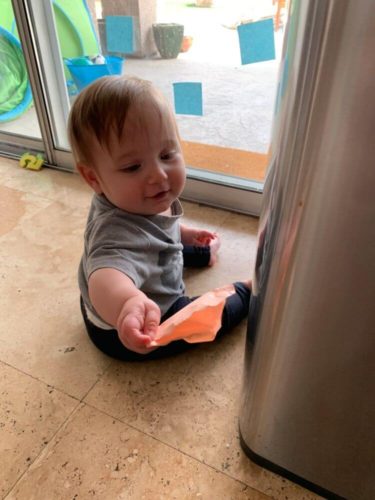
This can take many forms and, like most of these unconventional toys, is a great sensory experience for babies and toddlers. Make sure you supervise play so they don’t eat the paper. Some fun paper ideas include gift wrap, post-it notes, cardstock, tissue paper, or packaging paper. Skills little ones practice and use with paper include:
- Fine motor skills (especially with tearing and ripping)
- Hand-eye coordination
- Sensory
- Vocabulary such as rip, tear, crunch, crinkle, sticky, flat, soft, etc.
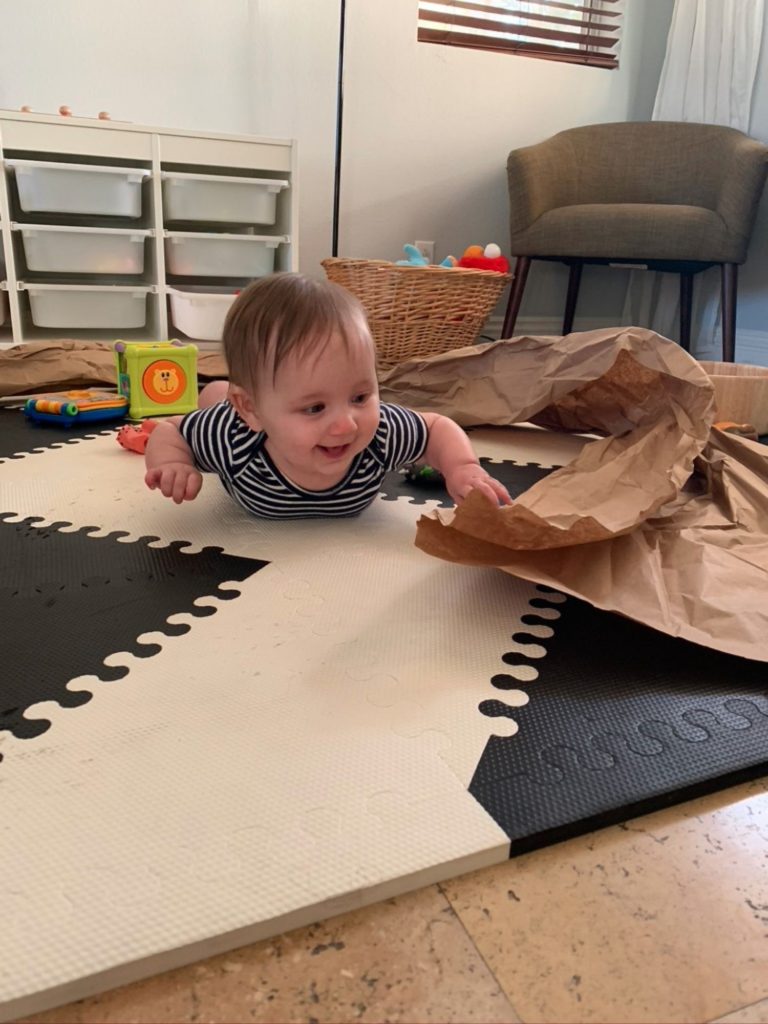
What other household object do you use in play with your little one? Add them to the comments below.
Share on facebook
Facebook
Share on pinterest
Pinterest
Share on email
Email
Share on print
Print
Please support my blogging efforts by sharing this post with someone who may find value in its contents.

Thanks for the terrific information for us.
Best regards,
Thompson Raahauge
You’re welcome! Glad you found the information useful.